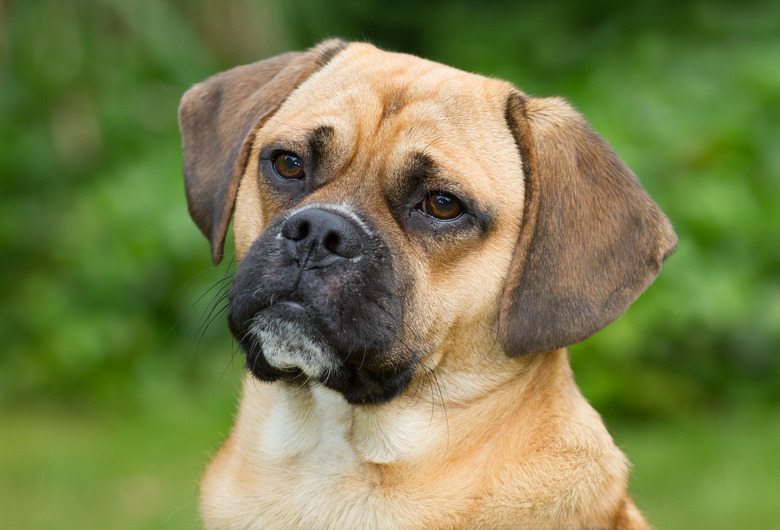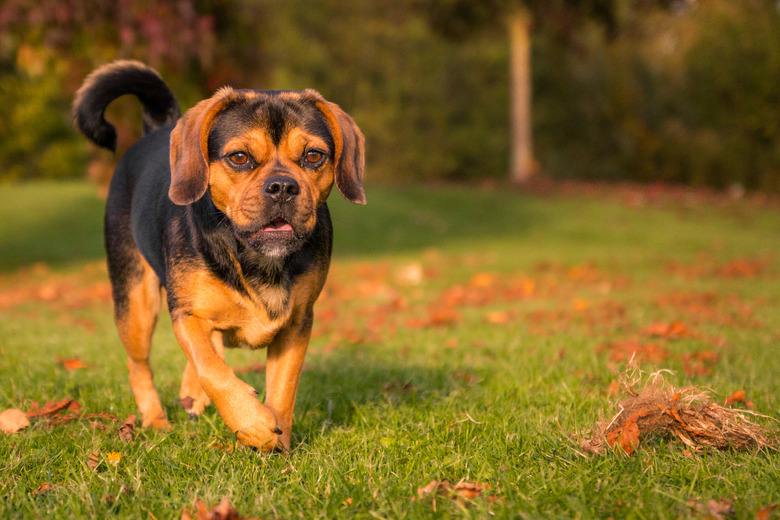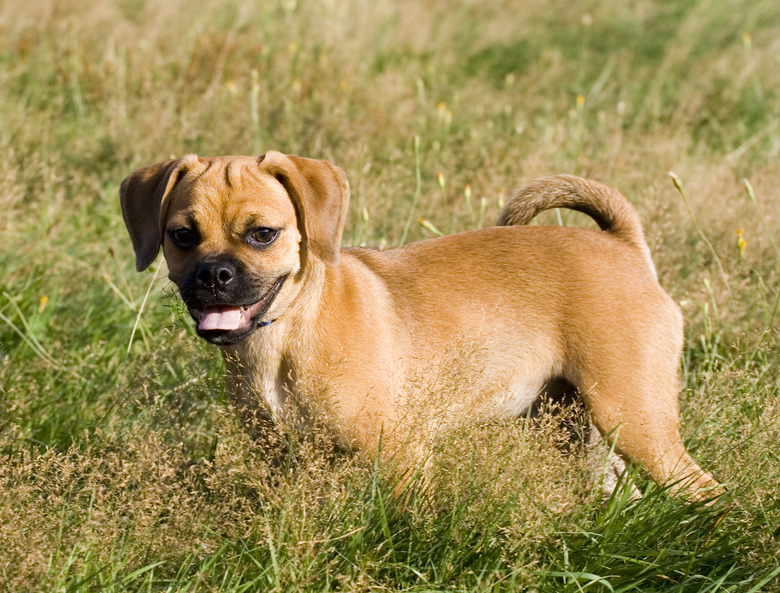Difference Between Puggles & Pocket Puggles
The puggle dog breed is not a breed recognized by the Americn Kennel Club (AKC), as AKC only recognizes purebred dogs, not mixed breeds. Puggles are created by mating a purebred beagle and a purebred pug; AKC recognizes both breeds and provides information about them. Pocket puggles are a smaller version of the same mixture. Beagle and pug parents tend to produce a dog that is energetic like a hound but thick in build with short hair that is colored fawn, tan and black, a wrinkled forehead and drooping ears like a pug.
Small but muscular puggles and mini puggles
Small but muscular puggles and mini puggles
Puggles typically weigh between 15 and 30 pounds and stand about 13 to 15 inches at the shoulder. Puggle puppies grow to be similar in size to their parents, but the size and shape of their heads may vary. Male puggles tend to be larger and more muscular than female puggles. Because puggles are not recognized as a breed, there are no height or weight standards to distinguish a standard puggle from a mini puggle or pocket puggle. Breeders usually consider pocket puggles to be puggles that weigh less than 15 pounds and stand shorter than 10 inches at the shoulder.
Blessed with mixed breed health
Blessed with mixed breed health
Puggles are generally a healthy breed with few of the health problems that purebred pugs and beagles tend to have. Because of an expanded gene pool, the characteristics of one breed tend to offset the deficiencies in the other breed. For example, purebred pugs are known for having breathing issues due to their flat noses, while puggles don't have the flat nose and thus escape the breathing problems that come with it. Similarly, puggles tend not to inherit their beagle parent's tendency for eye issues or hip dysplasia. Puggles that are extremely small or intentionally bred from smaller parents of each breed to produce pocket puggles, however, are likely to inherit genetic defects existing in each breed. One reason for this is that pocket puggles are sometimes a result of inappropriate breeding, such as breeding small, unhealthy dogs.
First and Second Generation Breeds
First and Second Generation Breeds
First generation puggles and pocket puggles come from a purebred beagle and a purebred pug parent. Breeders have had much better results breeding a female beagle with a male pug. Typically, puppies in each litter will look very similar to each other in color and markings. Second generation puggles are created by breeding two puggles; in second generation puggles, you will see more differences than in purebred first generation puggles. The puppies might look more like beagles, more like pugs or more like the puggles you bred. Breeding two smaller-sized puggles may create a second generation breed of pocket puggles that share the characteristics of second generation standard puggles but do not grow as big.
Buying Puggles or Pocket Puggles
Buying Puggles or Pocket Puggles
Pocket puggles are often a sales gimmick breeders use to sell their dogs; there really is no standard or guideline determining what makes a pocket puggle. Often the puppies are the same mixture of beagle and pug, but the breeder will select the smallest beagle and pug parents available. This does not guarantee your pocket puggle puppy will be small when it reaches maturity. Just as two small human parents can produce a large child, so can two small dogs.
Your puggle puppy will not have a registration, but the parents should be registered if you are buying from a reputable breeder. Ask to see the parents' registrations before buying your puggle to ensure both parents are purebreds and are healthy. If you're buying a so-called pocket puggle, bred from two puggles, the puggles won't have a registration; ask the breeder for information about the parents and all health tests that were performed on the parents before they were bred to produce pocket puggles. If you're adopting a rescue puggle, ask the organization if they have any information on the dog's history.


